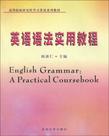英语语法实用教程
出版时间:2009-1 出版社:苏州大学出版社 作者:陈新仁 编 页数:221
Tag标签:无
前言
人们能够使用语言进行交际,但这种能力似乎并不需要语法书的指导或依赖语法教学。也许正因为如此,对于中国学生学外语是否需要教语法、学语法,经常有些争议。学生不喜欢语法或语法课当然还有别的原因。譬如,语法给人枯燥、刻板的印象(这是一般语法书给人留下的印象),语法教学往往流于传授语法的条条框框(这是一般语法教学给人留下的印象)。我们需要改变这一切,从教材的编写开始,从教法开始。 我们的基本看法是:第一,语法是语言使用中的重要部分,是一种表达资源,合理使用语法可以帮助我们在合适的语境中取得特定的交际效果。因此,我们要为学生提供表达特定思想的语法选择,知道什么时候选择什么语法形式来表达思想。强化语法学习和使用的“选择意识”,着力发展“语法能力”,可以从根本性上提高学习效率,增强表达效果。第二,语言表达以句子为基本单位,语法讲解要关注句子的各个组成部分(主语、谓语、宾语、状语、补语等),解决学生在构筑句子过程中的困难,为学生提供各个部分的可能选择,帮助他们体会不同语法形式选择在交际效果上的差异。第三,语法教学要以学生为中心,结合语法使用实例和交际情境,开展研究性学习,通过各种讨论,激发学生的学习兴趣及发现语法规律的欲望。 本教材的主要特色 1.注重语法讲解过程中的语言环境,确保其真实性;注重语法信息量的充足性以及信息内容的可理解性和趣味性。 2.打造全新的语法讲解体系,以传统语法体系为蓝本,从概念出发,举例充分。又从解决何时用、怎么用的问题出发,从学生组句需要出发,讲解句子各个组成部分,同时考虑到交际中表达简洁和强调的需要,讲解相关语法选择。超越语法知识本身,培养语法能力。 3.注重语法的交际价值,大幅度改变将语法作为抽象语言知识学习的做法。从交际角度,比较相似结构之间的差别。区分常规结构与修辞结构。 4.突出语法的文体、体裁特征;很多语料取样于现实生活,丰富多样。 5.关注语法与词汇作为交际手段之间的联系。 6.以中国学生学习英语为出发点和归属,考虑到母语的积极和消极影响以及读者学习语言的经验,不讲不是很需要讲的内容,预测性地呈现中国学生可能出现的语法问题。 7.采用研究性学习理念,设计大量讨论性、探索性、发现式问题,启发学生发现英语语法规律,培养学生的研究思维和能力。努力改变传统知识类教材的刻板方式,帮助教师克服一言堂的教学模式。本教程适合课堂教学,而不是“工具书”、“参考书”一类的教材。 8.考虑到学习者的客观需要,关注与各种语法测试的结合。
内容概要
人们能够使用语言进行交际,但这种能力似乎并不需要语法的指导或依赖语法教学。也许正因为如此,对于中国学生学外语是需要教语法、学语法,经常有些争议。学生不喜欢语法或语法课当然还有别的原因。 本书迥异于以灌输为主的传统语法教科书,其编写融入了最新的教学理念和编者对语法教学的深刻理解,内容设计富有创意。它不仅继承了传统英语语法的优点,而且吸收了现代语言学的最新成果;融枯燥的英语语法规则于真实多样而生动的语篇之中,既增强了可读性和实用性,又突显了交际能力的培养;研究型练习设计富于启发性,可以帮助读者学习掌握语法知识,继而提高读者的英语表达能力。该教程带给学生的将不仅仅是语法知识和能力,更有全新的学习体验和创新思维能力。
作者简介
陈新仁,学历:博士。毕业时间/毕业学校:1999.7/广东外语外贸大学。职称职务:教授,博士生导师。研究方向:普通语言学;语用学;外语教学法;英语修辞学。获奖及荣誉称号:1998年被评为江苏省优秀中青年骨干教师。社会兼职:国际语用学会(IPrA)、国际应用语言学协会(IALA)、美国语言学学会(LSA)、江苏省修辞学会(JRS)会员,中国语用学学会(CPrA)副会长。
书籍目录
Unit 1 Preliminaries about Grammar Pre-Class Reading 1. 1 Language and its grammar 1.2 Grammatical knowledge 1.3 Grammatical competence 1.4 Learning English grammar In-Class Activities Post-Class Tasks Project WorkPart One The Structure of English Sentences Unit 2 Constructing English Sentences Pre-Class Reading 2.1 Sentence components in English 2.2 Sentence patterns in English 2.3 Movements of sentence components In-Class Activities Post-Class Tasks Project Work Unit 3 Functional Taxonomy of English Sentences Pre-Class Reading 3.1 Declarative sentences in English 3.2 Interrogative sentences in English 3.3 Imperative sentences in English 3.4 Exclamatory sentences in English In-Class Activities Post-Class Tasks Project Work Unit 4 Grammatical Markers in English Sentences Pre-Class Reading 4.1 The plurality marker 4.2 The possessive case marker 4.3 The tense aspect markers 4.4 Degree markers for adjectives adverbs In-Class Activities Post-Class Tasks Project WorkPart Two The Subject and the Object Unit 5 The Subject Pre-Class Reading 5.1 The form choices of the subject 5.2 The meaning choices of the subject 5.3 The subject-predicate agreement in number In-Class Activities Post-Class Tasks Project Work Unit 6 The Object Pre-Class Reading 6.1 Defining the object 6.2 The form choices of the object 6.3 The meaning choices of the object In-Class Activities Post-Class Tasks Project Work Unit 7 Determiners in Noun Phrases Pre-Class Reading 7.1 Defining the notion of "determiner" 7.2 Types of determiners 7.3 The co-occurrence of determiners In-Class Activities Post-Class Tasks Project Work Unit 8 Attributives: Modifiers in Noun Phrases Pre-Class Reading 8.1 The definition of the attributive 8.2 The form choices of the attributive 8.3 The relative clause- 8.4 Ordering modifiers in noun phrases In-Class Activities Post-Class Tasks Project WorkPart Three The Predicate and Related Grammatical Categories Unit 9 The Terse and Aspect Systems Pre-Class Reading 9.1 The predicate 9.2 The tense of the predicate 9.3 The aspect of the predicate 9.4 Present tenses 9.5 Past tenses 9.6 Future times In-Class Activities Post-Class Tasks Project Work Unit 10 The Mood System Pre-Class Reading 10.1 Mood as a grammatical category 10.2 Form choices of the subjunctive mood 10.3 Function choices of the subjunctive mood In-Class Activities Post-Class Tasks Project Work Unit 11 The Modality System Pre-Class Reading 11. 1 Types of modal verbs 11.2 Categories of modality 11.3 Modality and po]iteness In-Class Activities Post-Class Tasks Project WorkPart Four The Adverbial and the Complement Unit 12 The Adverbial Pre-Class Reading 12.1 The definition of the adverbial 12.2 The form choices of the adverbial 12.3 Types of the adverbials 12.4 Adverbial clauses In-Class Activities Post-Class Tasks Project Work Unit 13 The Complement Pre-Class Reading 13.1 Defining the complement 13.2 The form choices of the subject complement 13.3 The form choices of the object complement In-Class Activities Post-Class Tasks Project WorkPart Five Grammar and Text Unit 14 Inversion Pre-Class Reading 14.1 Defining inversion 14.2 Grammatical inversion 14.3 Rhetorical inversion In-Class Activities Post-Class Tasks Project Work Unit 15 Ellipsis and Substitution Pre-Class Reading 15.1 Defining ellipsis 15.2 Grammatical ellipsis 15.3 Rhetorical ellipsis 15.4 Substitution In-Class Activities Post-Class Tasks Project Work Unit 16 Cohesion in English Texts Pre-Class Reading 16.1 Defining cohesion 16.2 Types of cohesive devices 16.3 Choice of cohesive devices In-Class Activities Post-Class Tasks Project Work References Glossary
章节摘录
Pre-Class Reading English sentences can be roughly classified into four types in terms of theircommunicative functions. These types are dedarative sentences, interrogativesentences, imperative sentences, and exclamatory sentences. This unit addressesthe structural properties of these types of sentences and examines them in their context of use. 3.1 Declarative sentences in English Dedarative sentences are the most frequently used kind among all the functionaltypes of sentences. They are used:a. to describe some state of affairs, as in (1); b. tointroduce some properties or features, as in (2);c. to portray some action, as in(3); etc. (1)Jack is in school. (2)Grammar can be interesting. (3)Were having grammar dass. Basically, declarative sentences are informative in the sense that after understandingwhat they say, people will get to know something, or know it better. Take (1)for example.Before reading this sentence, we have no idea where Jack is. 3.2 Interrogative sentences in English Interrogative sentences are of various types in English, induding simple questions(or Yes-No questions), special questions (or Wh-questions), alternativequestions, tag questions, and rhetorical questions. Yes-No interrogative sentences are generally used by the speaker for two purposes:a. to ask the hearer to confirm something, as in (4);b.to take some action, as in(5).
图书封面
图书标签Tags
无
评论、评分、阅读与下载
用户评论 (总计5条)
- 南大老师编的实用语法 ,非常有启发性
- 很不错的,有利于提高成绩哈哈~
- 正版书质量好 内容好
- 好书,写得很细。
- 辅助教材,很有用的
推荐图书
- 股海黄金
- 感悟医学家(第一辑)
- 超级小虎队第一辑
- 超级小虎队第一辑
- 电脑排版COOL-PAGEMAKER6.5C+MPS2000
- 特警酷酷大冒险
- FIREWORKS实战指南--网络图像制作工具/速成系列多媒体教程
- 特警酷酷大冒险
- 新纪元英语磁带4B
- 特色工具COLL-世纪特色工具大集合
- DELPHI5.0编程技巧与实例/新世纪电脑丛书
- 游戏风云之GAME 天堂(1CD)
- 高1英语(磁带1-4)--全新听力训练与测试
- 特警酷酷大冒险
- 新标准英语(三年级起点3B)
- 特警酷酷大冒险
- 法律硕士专业学位研究生联考(磁带)(综合课部分/民法学部分/刑法
- 全宋文
- 特警酷酷大冒险
- EZTALK3000英文魔法师(磁带)
- EZTALK1000英文魔法师(磁带)
- 认识小动物//樱桃小丸子开心双面挂图
- 特警酷酷大冒险
- 火爆夫妻--与现代夫妻对话
- 书法自学丛帖 --正书(上册)
相关图书
- 小学生名校必看名人名言1000条精华本
- 电脑学校2000---INTERNET篇
- 电脑学校 2000(应用篇)含1CD
- MICROSOFT FRONTPAGE98即学即用
- 不是冤家不聚头(上下)
- 畅通无阻网上行(光盘)
- 日语入门
- 操作系统 COOL--LINUX+WINDOWS 2000
- 500强管理制度实用软件
- 电脑2001合成本(上.下)专业版从入门到精通到开发(含3CD)
- 图文能手MACROMEDIA FREEHAND 8.0/高校电脑美术教材 2
- 网站建设必读--怎样建设一个成功的网站(1CD)
- 性的历史
- 学画卡通画(第二辑两册)
- 计算机网络技术网络语音数据集成指南(含1CD)/21世纪计算机网络通信技术丛书(1)
- 21世纪计算机网络通信技术丛书
- 中国兵书集成(3-5)
- 中华(神算)万年历
- 网师园
- DATABASE SCANNER网络数据库安全维护高手/计算机网络安全技术丛书3
- 中国兵书集成(2)
- 精通PAINT SHOP PRO 6.0入门捷径与应用技巧
- G全国学前班通用教材语言上
- 5S推行问题与对策
- 股海雄庄
